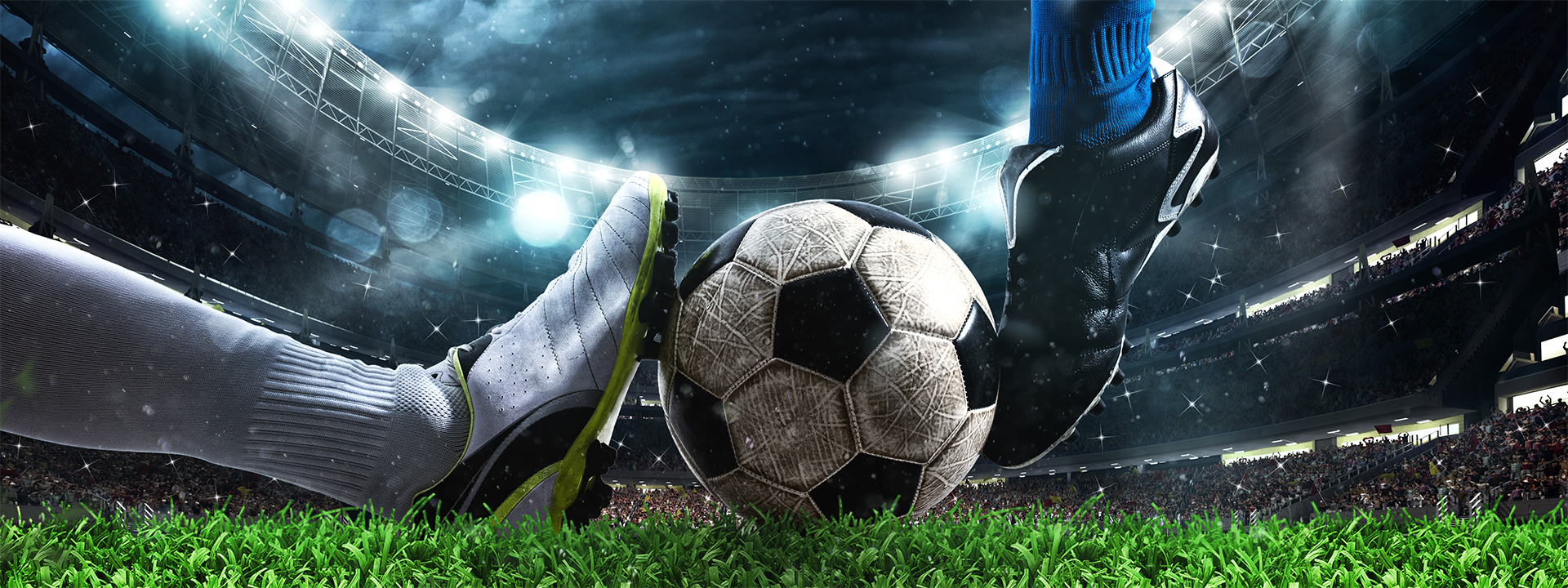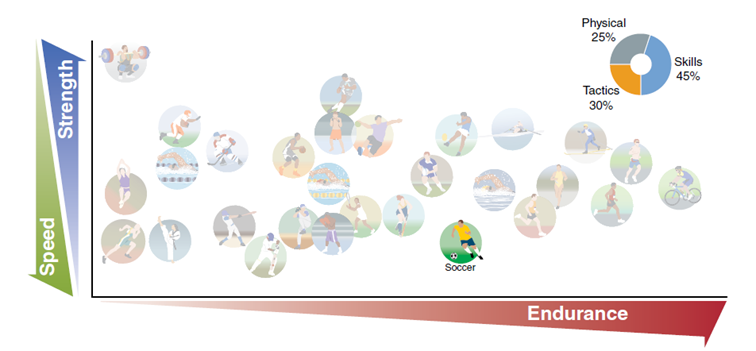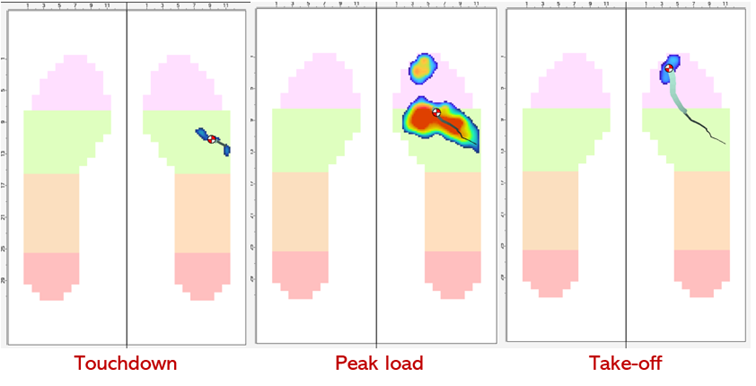
The Use of Plantar Pressure Mapping in Football
Football is one of the most popular team sports in the world, and it can be defined as a complex system where the interconnection of several factors, as well as the multidisciplinary nature of the athlete’s care, requires a systematic implementation of testing and monitoring technologies to ensure adequate support and risk management.
It is a sport where high-intensity running represents a critical performance factor, and the ability to sustain high-intensity efforts and repeated changes of direction during a game is of utmost importance.
Physical and physiological qualities related to biomotor abilities (strength, speed, and endurance) play an important role in player performance. Yet, tactical awareness and technical skills are the main contributors to a successful performance (Fig. 1).

Figure 1. The position of the soccer player on the three axes illustrates the relative importance of the three main physical capacities of importance for elite participation in soccer (from Laursen and Buchheit, “Science and Application of High-Intensity Interval Training”, adapted from G.A. Nader; “Concurrent Strength and Endurance Training: From Molecules to Men”, Medicine & Science in Sports & Exercise 38, no. 11 (2006): 1965-1970).
In this context, plantar pressure mapping is the only technology available today that can be implemented in a football team to analyze how the player moves within physical and skills requirements.
The wireless and wearable nature of plantar pressure insoles allows coaches and technical staff to evaluate biomechanics efficiency to support performance and decrease injury risk.
The Demands of a Football Player
The first step in designing a testing protocol is to analyze a player's performance model and energy demands during a game to target specific requirements and skills.
In over 40 years of scientific literature about football, the following requirements have been identified (1):
- Male players cover between 10 and 13 km for 90 minutes, while females cover between 9 and 11 km.
- Less than 2 minutes per game is each player's average time of possession of the ball.
- Sprinting actions contribute between 5 and 10% of total match distance.
- Players perform a sprint every 70 to 90 seconds.
- Players cover more distance in the first half (usually 5% more).
Once the ergogenesis (contribution in percentage of each energy system), the type of actions, the type of speed, the specific strength, and the specific range of motion have all been identified, a battery of tests can be designed and implemented.
With plantar pressure mapping, it is possible to evaluate the biomechanical aspects of running and sprinting during acceleration and maximum speed tests.
The most common distances used for testing speed and acceleration in football are 20 meters and 10 meters.
Plantar Pressure Mapping Testing in Football
Both acceleration and speed represent crucial qualities in football, and the ability to sprint at high speeds and intensities results from several factors, including proper biomechanical efficiency.
The average sprint distance in soccer is 16 m (Burgess et al., 2006). Thus, a 20 m distance is used to test maximum speed, and a distance of 5 and 10 m is recommended for testing acceleration.

Figure 2. Example of a 10 m acceleration test with XSENSOR’s Intelligent Insoles.
Some key metrics that can be obtained by performing these tests with the players wearing the insoles include the distribution of pressure during the whole stance phase, the trajectory of the center of pressure, and the bilateral timing of the foot. Furthermore, each of these metrics and information can be visualized and isolated by zones (rearfoot, midfoot, forefoot), allowing the analysis of foot segment micromovement in relation to the macro movement of the gait cycle.
To learn more about using plantar pressure mapping technology to build a player pressure profile in football and how to use the software to analyze the data, watch the second segment of the Plantar Pressure Mapping in Team Sports online seminar series, ‘How to Profile Football Players with XSENSOR’s Intelligent Insoles’.
References
- Burgess DJ and Gabbett TJ, Football (Soccer) Players in Physiological Tests for Elite Athletes. 2013. Human Kinetics 2nd ed.
- Laursen and Buchheit, Science and Application of High Intensity Interval Training. 2019. Human Kinetics.
